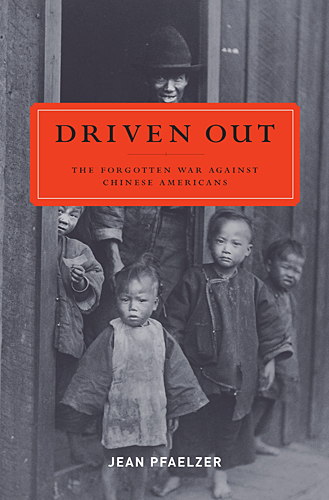
from the NY Post - Dec. 21st 2009 By Steve Cuozzo
MAYOR Bloomberg will soon decide whether to make permanent or scratch the "experimental" redesign that's turned Times Square into what David Letterman called a tourists' "petting zoo." Or maybe he won't.
The Department of Transportation, which dreamed up the mad makeover, is supposed to give the mayor its "findings" on the scheme by Dec. 31. But there's no telling how long Bloomberg might take to make up his mind - so the mess could remain indefinitely.
Closing Broadway to vehicular traffic between 42nd and 47th Streets has left us with slow-moving hordes of sightseers sprawled across asphalt-paved, cheaply furnished pedestrian "plazas." For all the energy this has sucked out of the fabled "bowtie," it's hardly a matter of esthetics alone.
This used to be Midtown's most dynamic commercial nexus. But Times Square office leasing has fallen on hard times, with fewer deals being made and lots of space soon to be vacant.
Companies come and go for many reasons, but it's clear Transportation Commissioner Janette Sadik-Khan's brainstorm isn't helping. "You might as well be at a mall in Paramus," an accomplished Midtown real-estate executive told me.
At risk is the continued appeal of Times Square to companies such as Morgan Stanley, Conde Nast, Skadden Arps, Viacom, NASDAQ
 , Thomson Reuters, Pillsbury Winthrop, ABC and Ernst & Young.
, Thomson Reuters, Pillsbury Winthrop, ABC and Ernst & Young.The tax-generating corporate presences are not mere backdrops to the bowtie's show-business and shopping attractions, but the stabilizing economic
 anchor that makes all the bright lights possible.
anchor that makes all the bright lights possible.Might Bloomberg reverse Sadik-Khan? Well, he's stood by as she imposed little-used bicycle lanes and "plazas" all over town, not to mention her unsightly parking strips in the middle of streets. It was a Plan-B strategy to try thinning traffic after Bloomberg's congestion-pricing proposal was shot down in Albany.
But in Times Square, she overreached her mandate. The DOT isn't supposed to mess with the historic DNA of any part of town, much less one as crucial as Times Square.
Its declared mission to "provide for the safe, environmentally responsible movement of people and goods in New York City" should preclude turning a once- desirable business
 district into an area as hostile to non-retail business as the South Street Seaport pedestrian mall.
district into an area as hostile to non-retail business as the South Street Seaport pedestrian mall.One commercial real-estate broker
 told Crain's recently that his Times Square clients were fed up with "throngs of tourists on the streets," and looking elsewhere as a result.
told Crain's recently that his Times Square clients were fed up with "throngs of tourists on the streets," and looking elsewhere as a result.The word "streets" is key: The bowtie in its '90s- redeveloped, crime-cleansed incarnation was full of tourists on sidewalks that they shared with office workers and theatergoers. free porno pics,free gay porno, free lesbian porno, tier porno, free porno, tims tube free porno, porno download, sexy porno, privat porno, porno
free porno bild, free porno movie, porno video gratis
porno liv de, porno video, free porno picture, you porno
Tourists, that is, were an indispensable part of the Times Square scene. But now they're the whole scene - not just on New Year's Eve, but every day.
"First, do no harm" should be the mantra before the chemistry of any large and critical swath of cityscape is so fundamentally altered. Yet the DOT not only plowed ahead without regard to economic
 consequences, it ran roughshod or bypassed all the checks and balances that normally govern much less impactful city land-use changes.
consequences, it ran roughshod or bypassed all the checks and balances that normally govern much less impactful city land-use changes.The DOT's Times Square actions were subjected to no oversight by the City Planning Commission or the Landmarks Preservation Commission - which must weigh alterations to the city fabric sometimes as small as window improvements on a single building. Not even the City Council weighed in.
An environmental-impact study is required for practically every minor variance, but not for the Times Square upheaval - even though the wholesale rerouting of Broadway auto, bus and truck traffic to Ninth Avenue clearly cries out for such evaluation. City Hall claims "no EIS is required because the project uses basic DOT tools," and likens it to making a two-way street one-way - which should surprise Ninth Avenue residents and businesses trapped in gridlock.
Even the City Design Commission, which is supposed to approve "landscape architecture" proposed for "city-owned property" and "installation of lights and other streetscape elements," had no say in the plazas or their furnishings.
Obviously, the streets are city-owned and the plazas constitute "streetscape elements." But City Hall claims a loophole: The Design Commission only gets involved over permanent installations. Apparently none of the DOT's plazas in any part of town are considered permanent yet - even though some seem destined to stand as they are forever.
Sure, the plazas can be improved. But they simply don't belong on the doorsteps of office towers home to great corporations that liked Times Square as it was - and might have a very different view of what it's becoming.

























